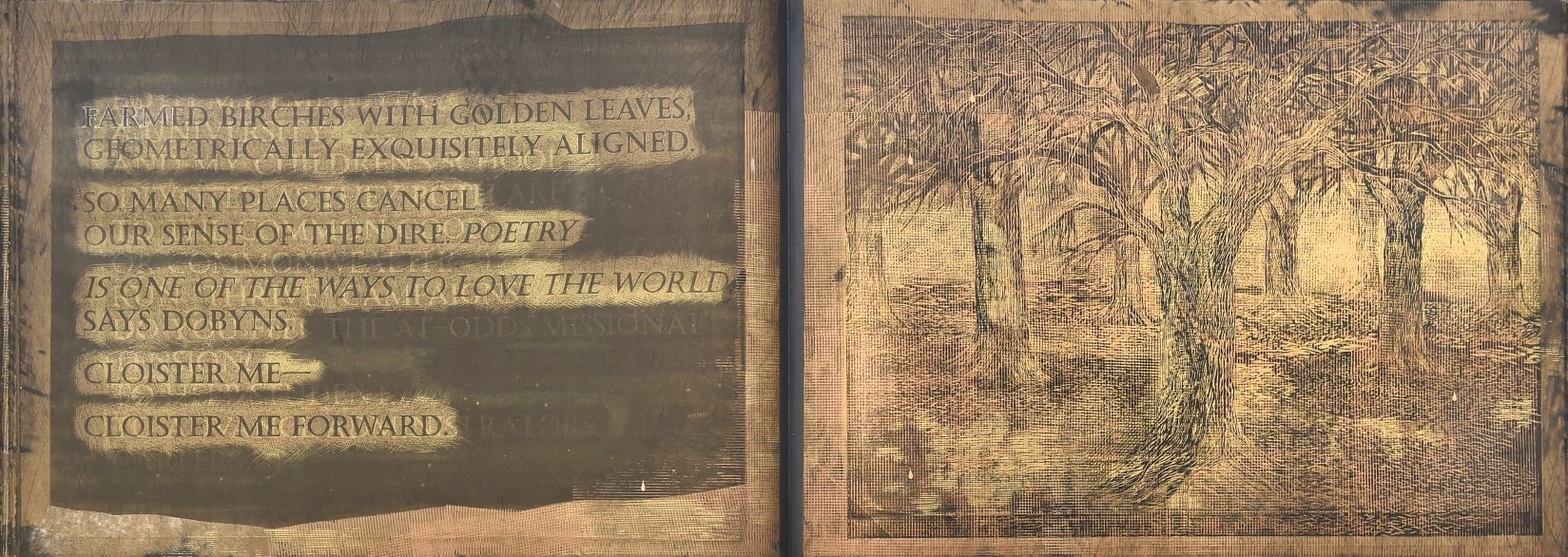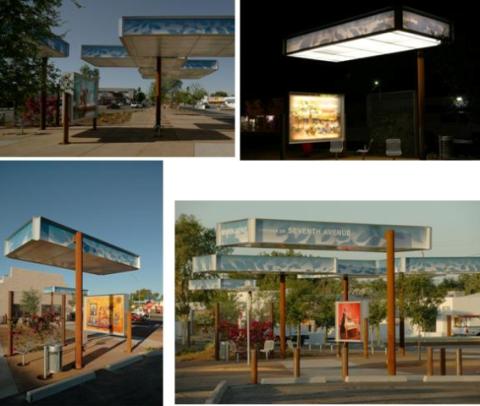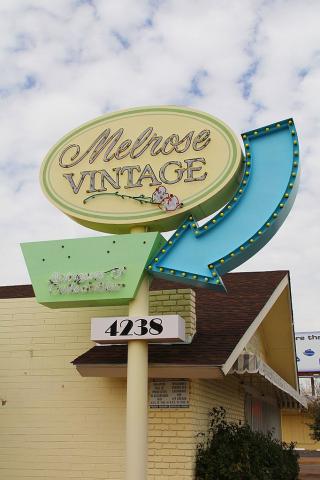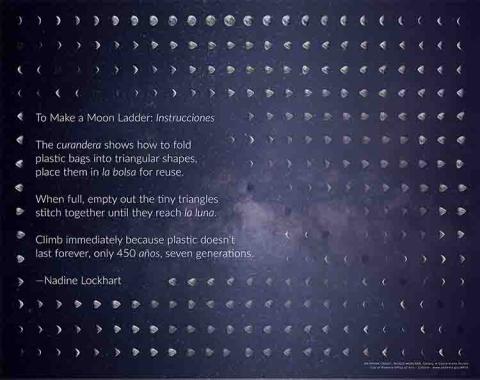On the street level
PhD student conducts research on public art project
Public art has an almost magical way of bringing people together, not only to communicate, but to inspire reflection and tell a community’s shared story. PhD English (literature) student Nadine Lanier (formerly Lockhart) worked first-hand with public art and poetry for her dissertation “Selected Poets’ Lived Experience of the Seventh Avenue Streetscape Project: A Phenomenological Study of Meaning and Essence.”
This multi-layered project is about the poets who participated in the Seventh Avenue Streetscape (SAS) project—a City of Phoenix Arts + Culture public art installation, which spans two decades. Streetscape panels not only provide needed shade from the hot Phoenix sunshine, but also include backlit boxes for rotating art and poetry displays adding character and culture to the city streets. Upon hearing about SAS, Lanier immediately loved the idea and the more she researched the project—how it began, who was involved, its design and assembly—the more she wanted to dig deeper.
According to her dissertation chair, Associate Professor Heather Maring, Lockart’s project is “one of a kind” because instead of trying to assess “public impact” (an important, but usual form of assessment often undertaken to justify the existence of public art), her dissertation investigates “what it is like to be a writer working for and within Arizona communities—and how the experience of creating public art influences writers.”
For her research, Lanier interviewed poets in-depth and one-on-one regarding the essential meaning they give to their lived experience of the project. “The poems were chosen to be part of a composite infrastructure of place—bus stop islands with canopy, seats, and an outdoor gallery of mini-billboards where art and poems are inserted on a scheduled rotation,” explains Lanier.
Lanier has lived in historic midtown Phoenix—North Encanto Neighborhood Association (NENA)—for 35 years. It’s just a hop, skip and a jump to the Melrose district, which stretches along Seventh Avenue from Indian School to Camelback Road, where SAS adorns the streets. Keeping within the ‘hood, she also teaches ENG 101/102 and creative writing at Phoenix College. Lanier boasts that SAS revitalized a declining neighborhood by bringing business owners, residents, artists, the City of Phoenix, and ASU together to clean up the Melrose area. She admits that the neighborhood has become almost gentrified, and some don’t care for that aspect. “But it was a very unhealthy area prior to the public art project. Very unhealthy.”
In 2018, one of Lanier's poems was accepted by the City of Phoenix for SAS. “This changed my research approach in that I was now a participant-observer, not just an outside investigator. By then, I was heading toward a very strong, stand-alone chapter written on the historic context of SAS,” says Lanier, who believes that hers is the only accounting of its kind. She conducted her research on the "street level," contacting and interviewing anyone connected to the SAS project.
Before deciding to research SAS, Lanier studied public art and funding, including its history during the Depression Era. She took an art history class at ASU on public art with Professor Betsy Fahlman, which provided a vast foundation on which to build.
Lanier, who also received her MA in English and MFA in creative writing from ASU, has been working as a poet and artist for decades. She admits that she is inspired by anything and everything. “If I read a poem, I track that poet’s vocabulary, line breaks, metaphors/similes, content, lines/phrases, images, and so forth; in short, I study their work, and then let it, by osmosis, enter into mine.” Her poetry appears in Little Somethings Press (Issue 5), Rinky Dink Press (Special Arizona Edition), and Write On, Downtown. Other publications include Poetry Express from a reading series in Berkeley.
Lanier has always managed to bring poetry to the people. She and Phoenix Inaugural Poet Laureate Rosemarie Dombrowski co-founded/co-hosted the Phoenix Poetry Series, a monthly reading of feature poets, which ran from 2008-2019 and was held in coffee shops and bars. She also worked for Alive Publishing in addition to Poetry Flash, where she assisted with weekly poetry readings and their two main annual events, Watershed and the Northern California Book Awards. The ASU Department of English granted Lanier a Graduate Programs Initiative Mini Grant in Spring 2023 for her proposed event ASU Rocks, in which students gathered to paint rocks with college colors, adding positive text from favorite lines of poetry and then placing them around campus to boost community spirit. She continues to bring art to the community with her dissertation. “This history, which exists nowhere else,” says Maring, “is truly a service to the City of Phoenix and anyone interested in histories of public art.”
Lanier says she is one of the “older” graduates and considers herself semi-retired. “Well, artists and poets don’t retire,” she says, “same as before graduation, I will be making poems and art.” After she graduates in fall 2023, Lanier plans to publish books of original poetry and a nonfiction book. She loves the idea of collaboration and will seek out other artists to work with on projects and will continue to take classes and impact positive social change with her art and poetry.
Image 1: A collage showing panels and installations from the Seventh Avenue Street Project, courtesy City of Phoenix Arts + Culture.
Image 2: A Melrose Vintage shop sign beckons shoppers to the gentrified Melrose District. Photo credit The Erica Chang on Wikimedia Commons under under CC 3.0.
Image 3: The SAS panel featuring Nadine Lanier's poem, "To Make a Moon Ladder: Instrucciones."



